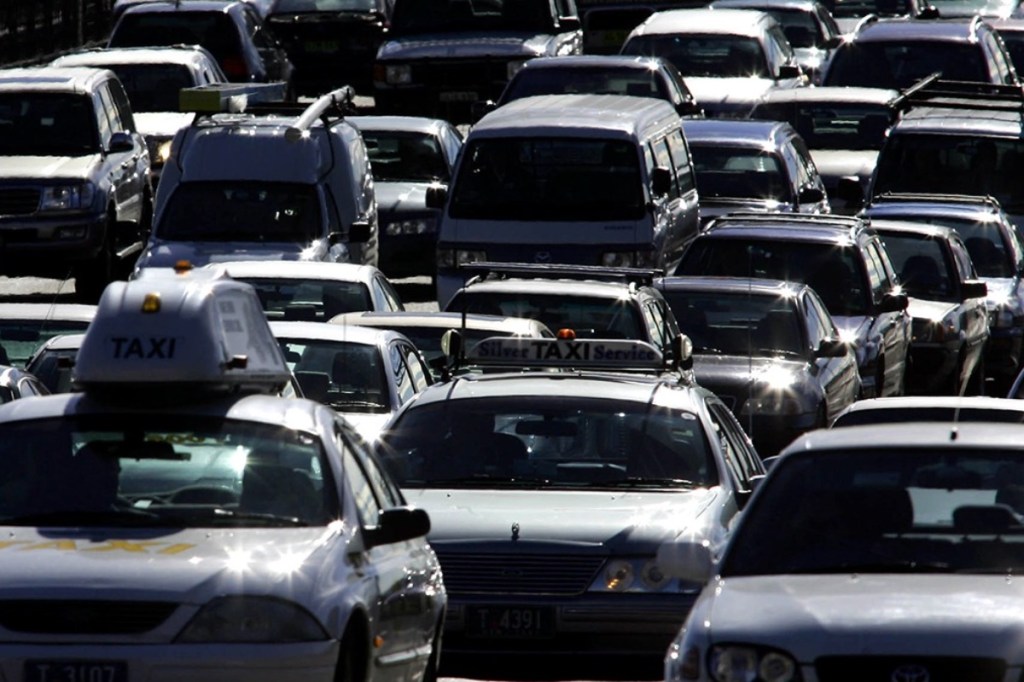Why the coming 10 years will be the decade of the car
In the coming decade, for better or worse, we are expanding our cities even further, writes our resident Stats Guy. We’re going to be driving more cars, too.

Last week we explored what type of vehicles Australians are driving and learned that our cars have gotten bigger.
It’s not just that we drive heavier and larger vehicles than ever, basic demographics guarantee that we are now facing Australia’s most car-centric decade yet.
Millennials continue to make babies at scale for another 12 years. Once their first child arrives, they move from their inner-city hipster apartments to the urban fringe since this is where family-sized homes are available.
Urban planners and state premiers encourage in-fill development as much as they can. The planning documents of all capital cities want to see around 70 to 80 per cent of population growth to occur as infill development.
This is best urban planning practice and such policies must be applauded, but it won’t happen.
Our cities grow at a fast rate – Melbourne for example is adding around 100,000 people each year. The fastest and cheapest way of building housing (in the short-term) is to bulldoze land on the urban fringe and put cheap boxes on top – greenfield development.
Developing a square meter of housing on our urban fringe is around three times cheaper than in a medium-density dwelling in the middle suburbs or in a skyscraper in the inner city.
In the case of Melbourne, there aren’t even physical boundaries to stop urban sprawl. While Sydney’s sprawl is halted by the Blue Mountains, Melbourne could expand all the way to Adelaide if it wanted.
You might like
In the coming decade, for better or worse, we are expanding our cities even further.
More people will live further away from the CBD. Population continues to grow faster than we add adequate public infrastructure.
Our cities aren’t building nearly enough public transport infrastructure to allow the growing population on the urban fringe to live car-free lives.
They will depend on their cars for shopping, school drop-offs, leisure and commuting.
Our settlement patterns suggest we become more car dependent – forget about all the old talk about Millennials procrastinating on getting their driver’s licenses – once you live on the urban fringe you will drive.
Further, simple demographics guarantee that car usage and car sales will see record heights in the coming decade.
It’s not just population growth and a lack of in-fill development that will push car sales up, the shifting population profile of Australia works in favour of the car industry in the coming decade.
The propensity to own a car changes throughout the lifecycle. Most kids (over 70 per cent) grow up in a household with more than one car.
At the age of 18, most Aussies still live with their parents but already drive a car – no surprise to see 82 per cent of 18-year-olds living in a multiple cars household.
From 20 onwards, more people leave the parental home and the share of households with multiple cars goes down.
Stay informed, daily
Our young Aussies are not moving into car-free households though. As young couples in the first apartment and as folks in rowdy share houses, most Aussies (64 per cent) still have access to multiple cars, but the number of single-car households goes up to 31 per cent – only once retirement age is reached at 65, do we see such a high rate of single car households again.
Very few households in Australia forego car ownership altogether. Only once Australians turn 81, do more of them live in a car-free household.
As of the 2021 ABS Census, the big Millennial generation was aged in their 20s and 30s. That’s of course the phase where around 30 per cent of households get away with just one car.
In the coming decade, we are pushing the whole Millennial generation into the multiple cars per household phase of the lifecycle.
Baby Boomers are too young and healthy to give up driving yet and will at least have one car in the household. Great news for anyone in the car industry.
Now that we know the coming decade is heavily skewed towards the car, it is upon drivers and politicians to decide what direction to take.
Considering climate targets and current trends in EV technology, we can assume that the future of our roads will be largely electric.
We need incentives fast to make the most of the Millennial wave of family car purchases. We learned in last week’s column that the average age of a passenger vehicle in Australia is 11.2 years.
A driver purchasing a car with a combustion engine today, will likely only upgrade to an EV by 2035.
Creating incentives for people to buy electric vehicles now will allow the large Millennial generation to drive cleaner vehicles for much longer.
Considering climate targets, such changes must be pushed through now.
Demographer Simon Kuestenmacher is a co-founder of The Demographics Group. His columns, media commentary and public speaking focus on current socio-demographic trends and how these impact Australia. His podcast, Demographics Decoded, explores the world through the demographic lens. Follow Simon on Facebook or LinkedIn for daily data insights in short format.









